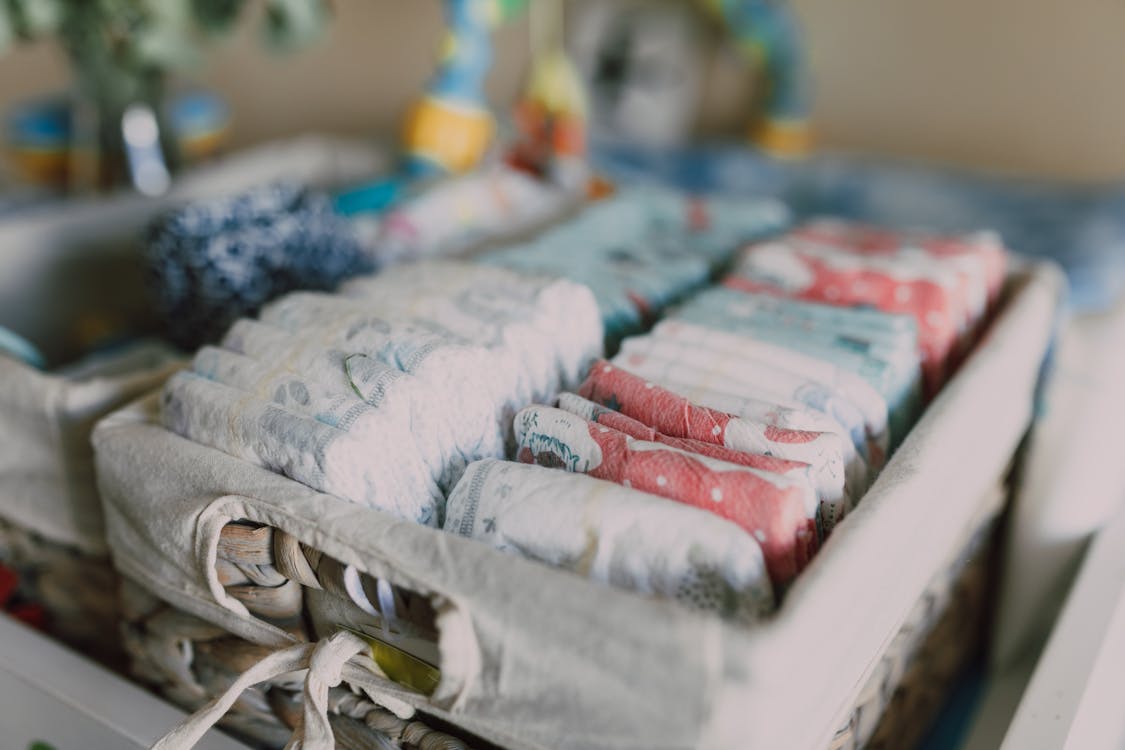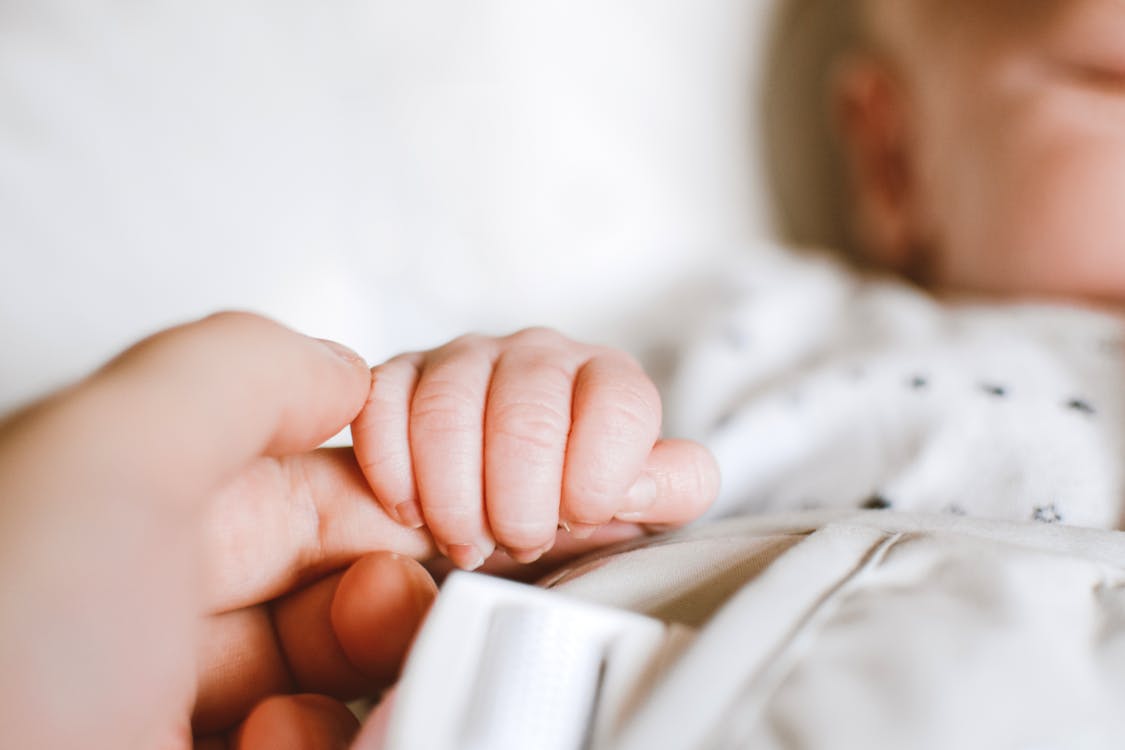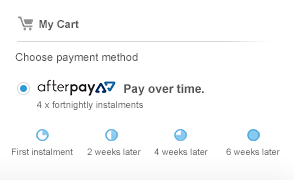Nappy Know-How | A Guide for New Parents in Australia

Congratulations on becoming a new parent! As you navigate the exciting journey of parenthood, one of the most essential items on your list is nappies. With so many options available, it can be overwhelming to choose the right ones. This blog post will provide you with valuable information about nappies, including how many you'll need, how to use them, and what to pack in your nappy bag.
How Many Nappies Per Day for a Newborn?

The number of nappies a newborn needs per day can vary significantly, depending on factors such as:
- Feeding frequency: Breastfed babies may have more frequent stools than formula-fed babies.
- Fluid intake: Increased fluid intake can lead to more frequent urination.
- Individual variations: Each baby is unique, and their nappy needs may differ.
Average Nappy Changes
While there's no exact number that applies to all newborns, most parents can expect to change their baby's nappy between 6 and 12 times per day. This range can be influenced by factors like your baby's weight, feeding schedule, and overall health.
Factors Affecting Nappy Frequency
- Breastfeeding: Breastfed babies often have more frequent stools, which may result in more nappy changes.
- Formula feeding: Formula-fed babies may have fewer stools but may still require frequent changes due to urine output.
- Solid foods: As your baby is introduced to solid foods, their bowel movements may become less frequent.
When to Consult a Paediatrician
If you notice any significant changes in your baby's nappy patterns, it's always best to consult with your paediatrician. This could include:
- Decreased urine output
- Unusual stool consistency
- Signs of dehydration
References
- American Academy of Pediatrics (AAP):
https://www.aap.org/ - Healthline: https://www.healthline.com/
- Mayo Clinic: https://www.mayoclinic.org/
How Many Newborn Nappies Do You Need?

A Surplus is a Key
When it comes to newborn nappies, having a surplus is essential. This is especially true during the early months when babies go through a significant number of nappies each day. A generous supply can help alleviate the stress of unexpected diaper changes or laundry delays.
Factors Affecting Nappy Usage
Several factors can influence the number of nappies your newborn will go through:
- Feeding Frequency: Breastfed babies often have more frequent bowel movements than formula-fed babies.
- Fluid Intake: Increased fluid intake, especially during hot weather, can lead to more frequent urination.
- Individual Baby Differences: Some babies naturally have more frequent bowel movements or may be more prone to diaper leaks.
Recommended Supply
A typical newborn supply might include:
- Disposable Nappies: A box or two of newborn-sized nappies. These are typically smaller and have a softer fit for newborns.
- Reusable Nappies: If you're using reusable nappies, consider having at least 20 cloth nappies and liners. This will allow you to rotate them frequently and ensure a clean supply.
Additional Considerations
- Overnight Nappies: For overnight use, you may want to invest in overnight nappies, which are designed to be more absorbent and provide a longer-lasting fit.
- Disposable Liners: If you're using reusable nappies, disposable liners can help make cleanup easier.
- Wet Bags: For storing soiled reusable nappies, a wet bag is a convenient and leak-proof option.
References
- Healthline: https://www.munchkin.com/blog/how-many-diapers-do-i-need-for-a-newborn
- Verywell Family: https://www.munchkin.com/blog/how-many-diapers-do-i-need-for-a-newborn
- BabyCenter: https://www.munchkin.com/blog/how-many-diapers-do-i-need-for-a-newborn
How Many Wet Nappies for a Newborn?

Understanding Your Baby's Hydration
A newborn's wet nappies can be a valuable indicator of their overall hydration. By monitoring the number of wet nappies your baby produces, you can get a sense of whether they are consuming enough fluids.
General Guidelines
- Aim for at least six wet nappies per day: This is a general guideline, and individual variations can occur. However, if your baby is consistently having fewer wet nappies, it's worth paying attention.
- Consider other factors: Other signs of adequate hydration include a moist mouth, plump cheeks, and a good urine output.
When to Consult a Paediatrician
If you notice a significant decrease in the number of wet nappies your baby is producing, it's important to consult with your paediatrician. They can assess your baby's overall health and hydration status, and provide appropriate advice.
Additional Tips
- Breastfed babies: Breast milk is a great source of hydration, so it's generally not necessary to offer additional fluids unless recommended by your paediatrician.
- Formula-fed babies: Follow the instructions on your formula regarding the amount of water to mix with the powder.
- Monitor for signs of dehydration: Look for signs of dehydration, such as a dry mouth, sunken eyes, and decreased urine output.
Remember: Every baby is different, and the number of wet nappies they produce may vary. If you have any concerns about your baby's hydration, don't hesitate to reach out to your paediatrician for guidance.
References
- American Academy of Pediatrics (AAP): https://www.aap.org/
- Healthline: https://www.healthline.com/
- Mayo Clinic: https://www.mayoclinic.org/
How to Use Reusable Nappies?

Reusable nappies offer a sustainable and cost-effective alternative to disposable nappies. Here's a detailed guide to help you use them effectively:
Preparation
- Choose the right size: Ensure the nappy fits snugly around your baby's waist and legs without being too tight. Most reusable nappies come in different sizes to accommodate your baby's growth.
- Insert the liner: Place the absorbent liner (often made of microfiber or bamboo) inside the outer shell of the nappy. Some nappies have built-in liners, while others require separate liners.
Fastening the Nappy
- Position the nappy: Place the nappy under your baby, ensuring the absorbent side is against their skin.
- Secure the closures: Fasten the nappy using the closures provided.
This could be snaps, Velcro, or hooks and loops. Make sure the nappy is snug but not too tight. - Check for leaks: After fastening, check for any gaps around the legs or waist. A well-fitted nappy should prevent leaks.
Changing the Nappy
- Remove the nappy: Unfasten the closures and gently remove the nappy from your baby.
- Clean the baby: Wipe your baby's bottom with a wet cloth or wipes. If there's a mess, use a nappy cream or ointment to soothe the skin.
- Rinse the liner: If the liner is soiled, rinse it in cold water to remove any solid waste.
- Store the nappy: Place the soiled liner and outer shell in a wet bag or pail.
Washing Reusable Nappies
- Pre-wash: Before the first wash, pre-wash the nappies to remove any finishes or chemicals.
- Sort by colour: Separate light and dark-coloured nappies to prevent colour bleeding.
- Wash: Wash the nappies in a washing machine using a gentle detergent. The water temperature can vary depending on the nappy material and the manufacturer's recommendations.
- Dry: Hang the nappies to dry in the sun or use a dryer on low heat. Avoid using fabric softener, as it can reduce the absorbency of the nappies.
Additional Tips:
- Experiment with different liners: Some babies may prefer different types of liners, so don't be afraid to try various options.
- Consider a nappy sprayer: A nappy sprayer can make cleaning soiled nappies easier, especially for solid waste.
- Check for leaks: If you notice leaks, adjust the nappy's fit or try a different size or liner.
- Join a reusable nappy group: Connecting with other parents who use reusable nappies can provide valuable advice and support.
References:
- The Nappy Lady: https://www.facebook.com/thenappyladyaustralia/
- Real Nappy Family: https://realnappies.com.au/
- Cloth Nappies Australia: https://www.econaps.com.au/
How Many Reusable Nappies Do I Need?

Determining the right number of reusable nappies for your baby can depend on several factors, including:
- Your baby's age: Newborns typically go through more nappies than older babies.
- Your preferred washing frequency: The more often you wash nappies, the fewer you'll need.
- The type of reusable nappies you choose: Some nappies require more frequent washing than others.
A general guideline is to have at least three times the number of nappies you use daily. This allows for a comfortable rotation between washing and wearing, ensuring you always have clean nappies on hand.
For example:
- If your baby goes through 8 nappies a day, you should ideally have around 24 reusable nappies.
- If you plan to wash nappies every other day, you might need even more to maintain a sufficient supply.
Here's a breakdown of how many reusable nappies you might need based on your baby's age and washing frequency:
|
|
|
|
|
|
|
|
|
|
|
|
|
|
|
|
|
|
|
|
Remember, these are just estimates. You may find that you need more or fewer nappies depending on your specific circumstances. It's always a good idea to start with a decent supply and adjust as needed.
Additional tips:
- Consider using a nappy sprayer: This can help rinse solid waste from nappies before washing, reducing the need for as many nappies.
- Invest in a good quality wet bag: A wet bag will help keep soiled nappies contained and prevent odours.
- Don't be afraid to experiment: There are many different types of reusable nappies available. Try a few different styles to find what works best for you and your baby.
References:
- Bells Bumz: https://www.econaps.com.au/blogs/cloth-nappy-blog/how-many-cloth-nappies-do-you-need
- Bambino Mio: https://www.bambinomio.co.uk/
- Modern Cloth Nappies: https://www.modernclothnappies.co.uk/pages/how-many-reusable-nappies-do-i-need
- The Nappy Gurus: https://www.thenappygurus.com/help.html
- Cheeky Wipes: https://www.cheekywipes.com/what-do-i-need-to-use-reusable-nappies.html
How Do Swim Nappies Work?

Swim nappies are a specialised type of diaper designed for use in aquatic environments. Unlike traditional cloth or disposable nappies, they are specifically engineered to contain solid waste while allowing water to pass through freely. This design is crucial for preventing accidents in swimming pools, beaches, and other water-based activities.
Construction and Materials
Swim nappies typically consist of two main components:
- Waterproof Outer Layer: This layer is usually made from a polyurethane laminate (PUL), a waterproof material that effectively prevents leaks.
- Inner Liner: The inner layer is often made from a mesh or soft fabric designed to absorb solid waste. This liner is typically removable for easy cleaning.
How They Work
When a baby wearing a swim nappy has a bowel movement, the solid waste is contained within the inner liner. The waterproof outer layer prevents the waste from escaping into the water. Meanwhile, the mesh liner allows water to pass through, ensuring that the baby remains comfortable and cool.
Key Features and Benefits
- Prevent Accidents: Swim nappies help to prevent accidents in aquatic environments, ensuring a more hygienic and enjoyable experience for both baby and parent.
- Comfort: The breathable design of swim nappies ensures that babies remain comfortable while swimming or splashing.
- Reusable Options: Many swim nappies are available in reusable options, making them a more environmentally friendly choice.
- Safety: Swim nappies can help to prevent the spread of bacteria and other contaminants in swimming pools and other aquatic areas.
Note: While swim nappies are effective at containing solid waste, they may not be as absorbent as traditional nappies. It's essential to change them frequently to prevent discomfort and potential leaks.
References
- House of Nappies: https://www.houseofnappies.com.au/
- BabyCenter: https://www.babycenter.com/
- Healthline: https://www.healthline.com/
What Does Nappy Rash Look Like?

Nappy rash, also known as diaper rash, is a common skin condition that affects babies. It occurs in the diaper area due to prolonged exposure to urine and faeces, which can create a warm, moist environment that irritates the delicate skin.
Symptoms of Nappy Rash
Nappy rash can present with various symptoms, including:
- Redness: The most common symptom is red patches in the diaper area, often around the buttocks, genitals, and upper thighs.
- Soreness: The skin may feel tender or sore to the touch, causing discomfort for your baby.
- Bumps or Pimples: Tiny red bumps or pimples might develop on the affected skin.
- Scaly or Dry Skin: The rash may appear scaly or dry, particularly if it's severe.
- Distress: Your baby may become fussy or irritable due to the discomfort caused by the rash.
Image of Nappy Rash
Nappy Rash
Causes of Nappy Rash
Several factors can contribute to the development of nappy rash:
- Prolonged Exposure to Urine and Faeces: Urine and faeces contain enzymes that can irritate the skin.
- Friction from the Nappy: The rubbing of the nappy against the skin can create friction and worsen the rash.
- Sensitivity to Detergents or Fabric Softeners: If you use harsh detergents or fabric softeners on your baby's clothes or nappies, it can irritate their skin.
- Yeast Infection: In some cases, nappy rash can be caused by a yeast infection, which often appears as a bright red rash with satellite lesions.
- Allergies or Sensitivities: Some babies may have allergies or sensitivities to certain ingredients in nappies or wipes.
Additional Information
- Prevention: To prevent nappy rash, change your baby's nappy frequently, use gentle cleansers, and allow the diaper area to air dry whenever possible.
- Treatment: Mild cases of nappy rash often resolve on their own with simple care. However, if the rash is severe or doesn't improve, consult with your paediatrician for advice on treatment options.
References
- NHS: https://www.nhs.uk/conditions/baby/caring-for-a-newborn/nappy-rash/
- Healthdirect: https://www.rch.org.au/clinicalguide/guideline_index/nappy_rash/
- nidirect: https://www.nhs.uk/conditions/baby/caring-for-a-newborn/nappy-rash/
- Healthline: https://www.mayoclinic.org/diseases-conditions/diaper-rash/symptoms-causes/syc-20371636
- www.hcd.com
- DESITIN: https://www.desitin.com/diaper-rash-products/maximum-strength-original-zinc-oxide-paste
How Often to Change a Newborn Nappy?

Regular nappy changes are essential for preventing skin irritation and diaper rash in newborns. While there's no one-size-fits-all rule, aiming to change your baby's nappy every two to three hours is a good general guideline. However, you may need to change it more frequently under certain circumstances.
Here are some factors to consider:
- Soiling: If your baby has a bowel movement, change the nappy immediately to prevent skin contact with faeces.
- Urine: While urine itself isn't usually irritating, leaving a wet nappy on for too long can create a warm, moist environment that promotes bacterial growth.
- Skin sensitivity: Some babies may have sensitive skin and develop irritation more easily. If you notice redness or discomfort, change the nappy more frequently.
Additional tips:
- Clean thoroughly: When changing your baby's nappy, gently wipe away any urine or faeces with warm water and a soft cloth. Avoid using harsh soaps or wipes.
- Allow air time: After changing the nappy, give your baby's bottom some airtime to help prevent diaper rash.
- Use barrier cream: Applying a barrier cream like zinc oxide can help protect your baby's skin from irritation.
Remember: Every baby is different, so it's important to observe your own baby's cues and adjust the nappy change frequency accordingly. If you have concerns about diaper rash or skin irritation, consult with your paediatrician.
References:
- National Institutes of Health (NIH): https://www.ncbi.nlm.nih.gov/books/NBK559067/
- American Academy of Pediatrics (AAP): https://www.aap.org/
What to Pack in a Nappy Bag?

A well-stocked nappy bag is a lifesaver when you're out and about with your little one. Here's a comprehensive list of items to consider packing:
Essentials
- Extra nappies: A good rule of thumb is to pack at least two more nappies than you think you'll need.
- Wipes: Wet wipes are essential for cleaning up messes.
- Diaper cream: Nappy rash can be painful for babies. Pack diaper cream to soothe and protect their skin.
- Change of clothes: Accidents happen! Be prepared with a change of clothes for your baby.
- Plastic bags: Use plastic bags to store soiled nappies and clothes.
- Hand sanitizer: Keep your hands clean with hand sanitizer.
- Wet wipes: Wet wipes are also handy for cleaning your hands and surfaces.
Additional Items
- Pacifier: A pacifier can be a great comfort for babies.
- Bottles and formula: If your baby is formula-fed, pack bottles and formula.
- Snacks: Bring along healthy snacks for your baby if they're older.
- Toys: Pack a few small toys to keep your baby entertained.
- Diaper changing mat: A portable diaper changing mat can make changing your baby's nappy on the go easier.
- Nursing cover: If you're breastfeeding, a nursing cover can provide privacy.
- First aid kit: A small first aid kit can be helpful for minor injuries.
Remember, it's important to customise your nappy bag based on your baby's age and needs. As your baby grows, you may need to add or remove items from your bag.
References:
- American Academy of Pediatrics: https://www.aap.org/
- Healthline: https://www.healthline.com/
- BabyCenter: https://www.babycenter.com/
Conclusion
Choosing the right nappies for your baby is an important decision that can significantly impact their comfort and well-being. By understanding the different types of nappies, knowing how many you'll need, and packing essential items in your nappy bag, you can ensure a smooth and enjoyable experience for both you and your baby. Remember, if you have any questions or concerns, don't hesitate to consult with your paediatrician.





